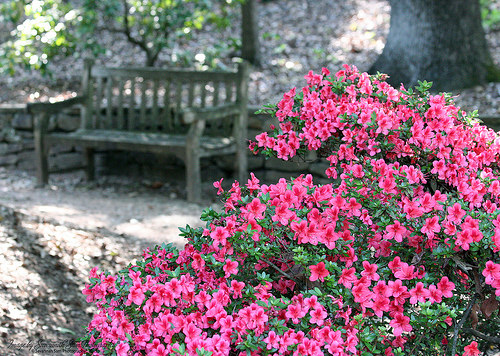So, you’ve decided to start a garden? That’s great news! These 5 foolproof tips for how to start a garden is the perfect place to start growing your green thumb.

Garden photo via Scott Smith (SRisonS)/Flickr Creative Commons
5 foolproof tips for starting a garden
1. Select a good spot
When starting a new garden, look for a location that is actually conducive to growing plants. How was this location used before? What’s the general condition of the soil? Would it be easy to turn the space into a garden? What type of sunlight does it get?
Keep in mind that..
- Full sun is 6 or more hours of direct sun, and preferable for growing most vegetables and fruits. (Note that there are some shade-tolerant vegetables that will grow in less than 6 hours.) Want to grow roses? You’ll be better off with full sun.
- Partial sun/partial shade is 4 to 6 hours of direct sunlight. Many plants like morning light and afternoon shade, especially in warmer climates. See our list of shade-loving plants to find some that will grow well in partial or full shade.
- Full shade is less than 4 hours of direct sunlight.

Container garden via Scrappy Annie/Flickr Creative Commons
2. Decide the size
One of the biggest mistakes novice (and expert) gardeners make is to take on too much of a challenge. Don’t create too large of a garden, so that you can’t keep up on all the work. What fun is that?
Instead, select a manageable size space for your garden, which will be easier to weed, water, fertilize and maintain.
Remember, even small, urban gardens can be beautiful. Containers are an easy way to grow a small garden with a big impact. (Download Bluprint’s FREE Success With Container Gardening PDF guide for great container gardening tips!)
3. Prep the soil
Most gardeners overlook the importance of healthy soil. Yet, the soil is immensely important for growing a beautiful garden. If you don’t know much about your soil, get a soil test first. That way you can amend the soil only with the nutrients really needed. Your local cooperative extension service offers soil tests, or you can purchase one inexpensively at your local garden center.
Building healthy soil means amending it annually with several inches of organic materials, such as compost, worm castings and well-aged manures.Willing to wait a few months before planting? Try building healthy soil using the no-till, lasagna garden method. It takes about 6 months before you can begin planting, but it’s a good way to start a brand new garden.

Photo via Savannah Smith Photography/Flickr Creative Commons
It’s also a good idea to know your soil’s pH levels so you can make sure your plants are able to properly access the soil’s nutrients. For instance, blueberries and azaleas will grow best with a more acidic soil, rather than an alkaline soil.
Finally, don’t forget the importance of mulching. A couple inches of mulch smothers weeds, reduces water, keeps soil temperatures more constant and even mitigates some fungal diseases. Always keep mulch a bit away from the plant stem to reduce root rot and rodent damage.
4. Pick the right plants
One of the best ways to get flowers, trees and edibles to grow properly is to plant them in favorable growing conditions. In other words, grow the right plant in the right place.
Before planting, take the time to find out which plants thrive in your USDA growing zone, soil type, moisture requirements and garden space. Local Master Gardeners, independent garden centers and neighbors are good sources of plants for your area. You’ll save yourself a lot of headaches if you grow plants where they really want to grow.
Some vegetables, such as carrots, radishes and beets, grow best from seeds, and are more difficult to grow from transplants. See also our list of 10 easy flowers to grow from seed and 20 easy vegetables to grow from seed.
If you want to grow tomatoes, eggplants or peppers from seeds, start them indoors about 6 to 8 weeks before your last frost date. Allow the plants to gradually become accustomed to the outdoor growing conditions before planting them outside. If you’re in a hurry for tomatoes or peppers, start them from transplants that can be found at local garden centers.
5. Be a good neighbor
Always remember to garden in eco-friendly ways, such as reducing or eliminating chemicals that can kill bees, butterflies and birds. Instead, plant flowers that attract butterflies and other pollinators.
Avoid growing invasive plants, which might escape from your garden into nearby open fields or your neighbors’ yards.
In essence, try to garden in a way that works well with Mother Nature and don’t leave problem plants that will cause issues in the future.
Remember, we all began as novices once, and these five basic tips for starting a garden remain important even if you’ve been planting for ages.
Free Online Gardening Class
Gain design skills & make your garden the envy of your neighbors.Enroll FREE Now »


Share tips, start a discussion or ask one of our experts or other students a question.
No Responses to “How to Start a Garden the Right Way”